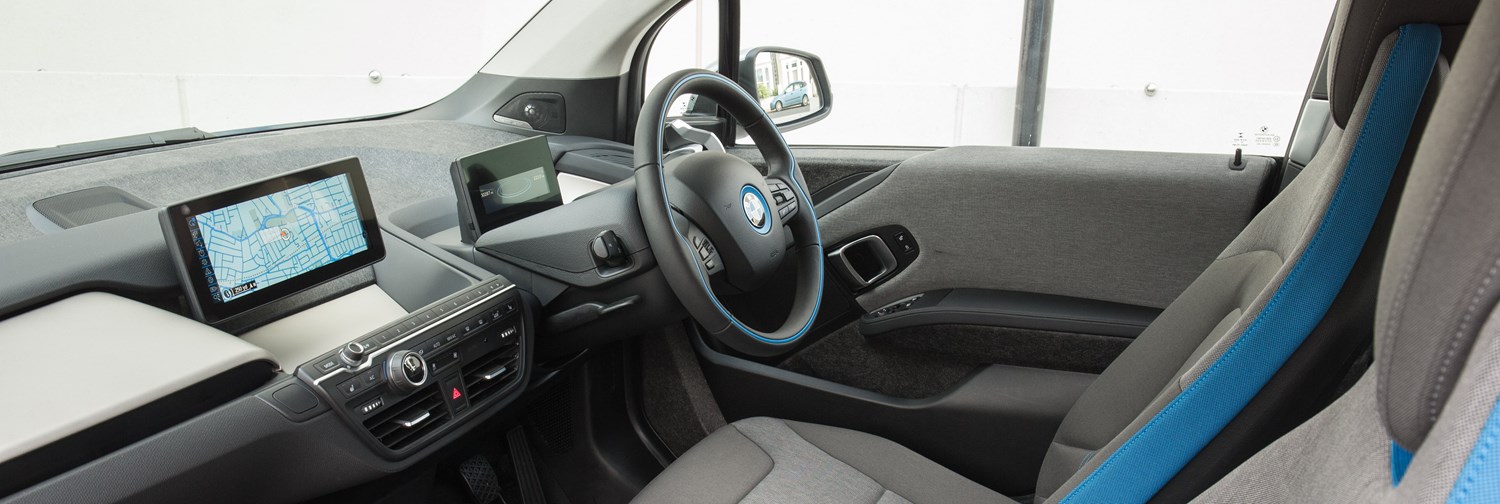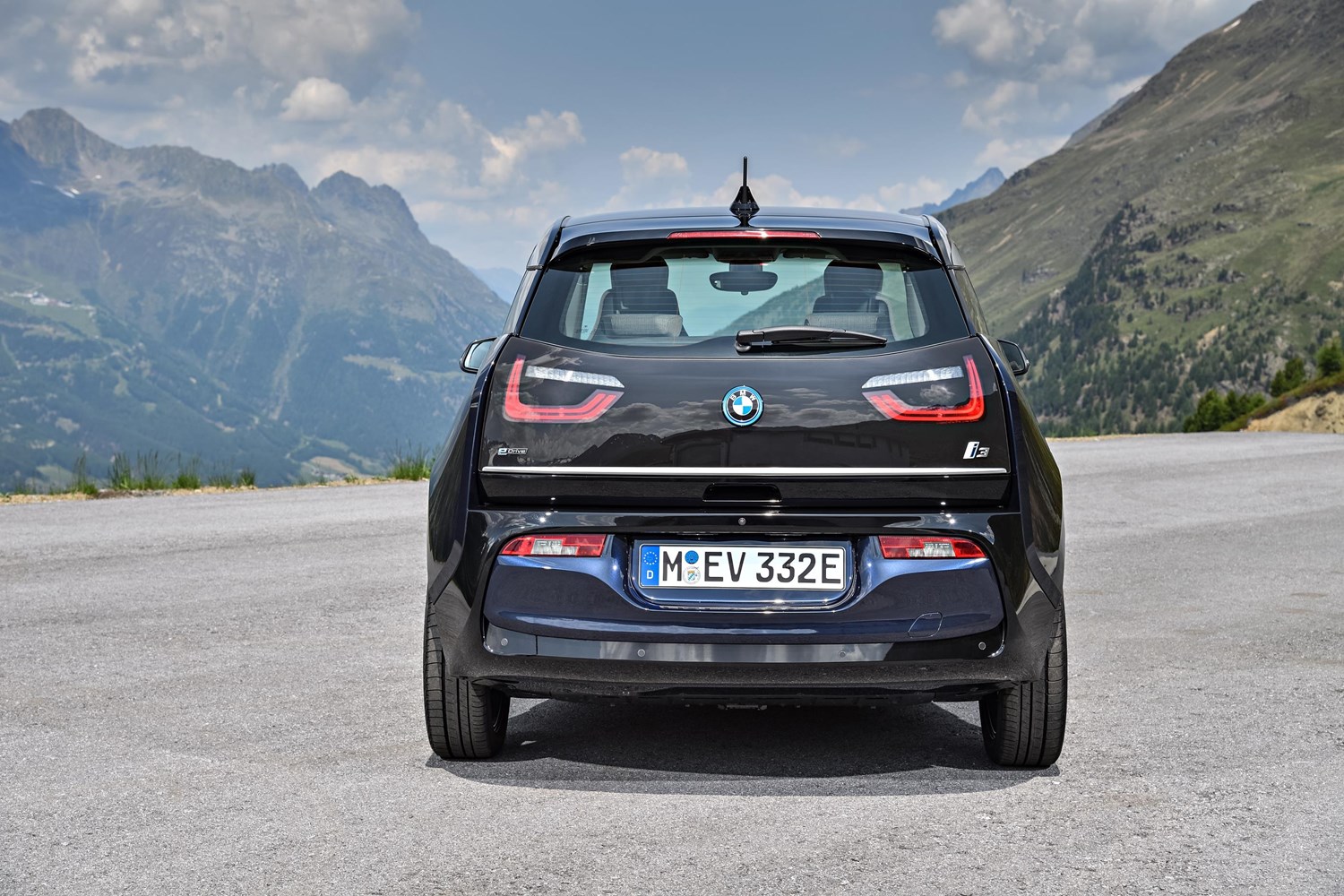Model Review
The BMW i3 has been with us for four years, having started production during 2013. It was effectively the first of its kind – a fully electric hatchback that sat within the premium sector. Today this fiercely competitive market is ever changing, and the question is does the i3 have what it takes to uphold its position here.
The second generation has just arrived wearing a fresh face and LED lighting all round. There’s also going to be a “sporty” version called the i3 S, arriving later on this year. This will add sports suspension, extra performance and a different choice of interior trim.
The range-extender option is still available. This turns the i3 into a form of hybrid thanks to a two-cylinder motor located beneath the boot floor.
Latest Model
The newest model is very hard to tell apart from the first generation. Sit the interiors side by side and it would be like playing a game of spot the difference. However, delve a bit deeper and you’ll spot the subtle difference, such as the improved sat nav system and chassis technology that improves the drivability of the car.
The exterior changes are, again, very subtle but there. LED lighting all round is a major improvement over the halogen lighting for the indicators. The LED headlamps have also improved, although whether it is still a £710 optional extra is yet to be announced.
Value for money
The BMW i3 costs from £34,070 brand new, which can’t be called cheap. It also costs considerably more than many of its rivals including the Nissan Leaf, Hyundai Ioniq Electric and Volkswagen E-Golf.
Opt for a second hand one, however, and the i3 makes for a used car bargain. We found a 2014 one with just 17,904 miles on the clock for £15,000. Spend a few thousand more and you’ll be able to pick up a range extender model.
This is less than half the price of a new one, which makes it stack up well against a second hand Nissan Leaf in terms of excellent value for money.
Looks and image
The i3 is definitely a marmite car in terms of its looks. However, even four years after it was first released, it looks different to any other car on the road let alone in the electric hatchback segment. It also carries a BMW badge, which adds extra kudos.
Space and Practicality
This is the achilles heel of the i3. It might technically be a five-door hatchback, but boot space is very minimal thanks to the motor under the boot floor. There is a small load area in the front too, although this could barely hold a bag of shopping.
Inside room in the front is surprisingly good. Step in the back, however, and it can only seat two people who aren’t too tall. Another less practical element to the i3 are its rear door. You have to open the front doors first and then the rear ones are hinged ‘suicide’ style.
The i3 is also a rather high up car, so these two elements combined can make for a rather tricky entrance and exit to the car, especially in tight parking spaces where it is nigh on impossible to actually exit from the back with both doors open.
Inside, the car does feel very light and airy and gives the illusion of plenty of space, especially with the panoramic sunroof fitted.
Engines
The BMW i3 is available either as a fully electric car or as a “range extender”. This consists of a two-cylinder motor located beneath the boot floor.
With 168bhp it doesn’t sound very powerful. However, because it has no gearbox as such there is no hesitation in power, which comes instantly under any acceleration, with 0-60mph taking 8.4 seconds
Running Costs
The i3 is much more affordable to run compared with the petrol or diesel powered equivalent. However it costs more to buy so waving this factor in the average amount per month is £68 according to data released by Fleet News.
Things to look out for
The i3 doesn’t feel like any other car to drive, and that’s not to do with it being electric, but rather the regenerative braking. You can’t switch it off and at times it seems overly aggressive, standing on the brakes very hard the second you lift off the throttle.
Rivals
The closest rivals to the BMW i3 are the Volkswagen e-Golf and Nissan Leaf. Both of these cars cost similar money when new, although the BMW definitely feels more refined than either of them, particularly the Nissan which has felt old fashioned for a few years now.
The BMW also retains its value much better than the Nissan. However, the e-golf is too new to have lost enough of its value to be on a par with the BMW on the second hand market.
Depreciation
A four-year-old example of the i3 can cost from £15,000 and this means that in less than four years it has lost more than half its value. However, compared with other electric cars this still seems like a fairly strong valuation.
If you’re looking at buying a used example, then they become an electric bargain. For less than the price of a basic spec VW Golf or BMW 1 Series you will get a car that not only stands out from the crowd but is also congestion charge free, affordable to run and offers lots of comfort and refinement.





